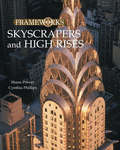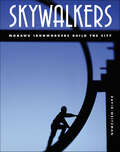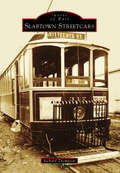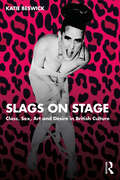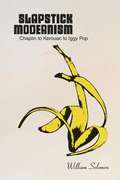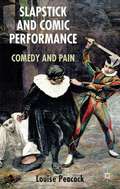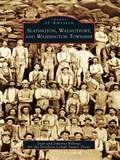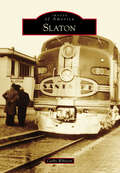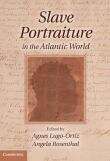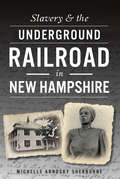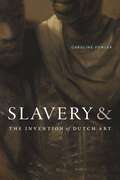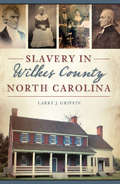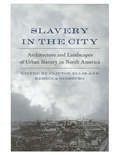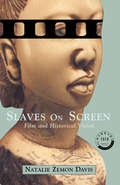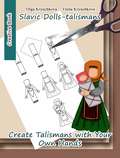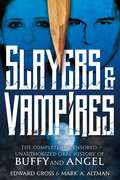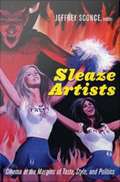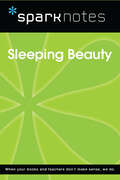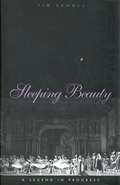- Table View
- List View
Skyscrapers (Readers)
by Libby RomeroLearn all about the world's most amazing skyscrapers – from the first, to the tallest, to how they're built, and everything in between – in this new National Geographic Kids Reader. The Level 3 text provides accessible, yet wide-ranging, information for fluent readers.
Skyscrapers and High Rises (Frameworks (group 1) Ser.)
by Cynthia Phillips Shana PriwerThis work includes a brief history of skyscrapers as well as chapters on elevators and communications, facades and facing, mechanical and electrical systems, forces of nature, and much more.
Skywalkers: Mohawk Ironworkers Build the City
by David WeitzmanSkyscrapers define the American city. Through a narrative text and gorgeous historical photographs, Skywalkers by David Weitzman explores Native American history and the evolution of structural engineering and architecture, illuminating the Mohawk ironworkers who risked their lives to build our cities and their lasting impact on our urban landscape.
Slabtown Streetcars (Images of Rail)
by Richard ThompsonNo area of Portland, Oregon, played a more important role in street railway history than Northwest Portland and the neighborhood known as Slabtown. In 1872, the city's first streetcars passed close to Slabtown as they headed for a terminus in the North End. Slabtown was also home to the first streetcar manufacturing factory on the West Coast. In fact, until locally built streetcars began to be replaced by trolleys from large national builders in the 1910s, more than half of all rolling stock was manufactured in shops located at opposite ends of Northwest Twenty-third Avenue. All streetcars operating on the west side of the Willamette River, including those used on the seven lines that served Northwest Portland, were stored in Slabtown. When the end finally came in 1950, Slabtown residents were riding two of the last three city lines.
Slags on Stage: Class, Sex, Art and Desire in British Culture
by Katie BeswickSlags on Stage weaves cultural analysis with poetry and art criticism to explore the concept of the ‘slag’ and its place in contemporary British culture.The book traces the etymology of the word slag through the twentieth and into the twenty-first century, thinking through the ways ‘slag’ speaks to issues of class, sex and desire. Broadly, slag is an insult bound up with women’s sexual reputations – but beyond this it is a ‘key’ word that shapes the ways we debate and understand what it means to be a woman. For women who came of age in the United Kingdom in the late twentieth and early twenty-first centuries ‘slag’ produces complex feelings and has influenced how we have come to know ourselves and understand our sexual and quotidian desires. This book explores the terrain of slag and includes analyses of artworks by artists who have invoked the slag in their practice, including Tracey Emin, Cash Carraway and Michaela Coel. Covering the cultural politics of clothing, motherhood, television representations, sexual assault, sex work and desire, Slags on Stage asks: what role does the ‘slag’ play in British culture? Who is she for? And how have women used sex and sexuality to have their own say in cultures that want to control them?This is a fascinating exploration for students and scholars of British drama, theatre and performance, cultural studies and sociology.
Slapstick Modernism: Chaplin to Kerouac to Iggy Pop
by William SolomonSlapstick comedy landed like a pie in the face of twentieth-century culture. Pratfalls and nyuk-nyuks percolated alongside literary modernism throughout the 1920s and 1930s before slapstick found explosive expression in postwar literature, experimental film, and popular music. William Solomon charts the origins and evolution of what he calls slapstick modernism --a merging of artistic experimentation with the socially disruptive lunacy made by the likes of Charlie Chaplin. Romping through texts, films, and theory, Solomon embarks on a harum-scarum intellectual odyssey from high modernism to the late modernism of the Beats and Burroughs before a head-on crash into the raw power of punk rock. Throughout, he shows the links between the experimental writers and silent screen performers of the early century, and explores the potent cultural undertaking that drew inspiration from anarchical comedy after World War Two.
Slapstick and Comic Performance
by Louise PeacockSlapstick comedy has a long and lively history from Greek Theatre to the present day. This book explores the ways in which comic pain and comic violence are performed within slapstick to make the audience laugh. It draws examples from theatre, television and film on both sides of the Atlantic.
Slatington, Walnutport, and Washington Township
by Sean Billings Northern Lehigh Future Focus Johanna BillingsThe photographs in Slatington, Walnutport, and Washington Township show readers what the area looked like from when it was a slate quarrying community through the canal era to the present. Among the views are images of a Lehigh Valley Railroad train accident that led to the demolition of the Slatington station, soapbox derby races down Main Street in Slatington, the Lehigh Canal in Walnutport, and life in the slate quarry towns of Slatedale, Emerald, and Washington Township.
Slaton
by Cathy WhittenSlaton, Texas, has a very rich and interesting history. The journey began in 1911 with the clickety-clack of the railroad track of the Santa Fe Railroad. Slaton was named after local rancher and banker O.L. Slaton on May 11, 1911. It was nicknamed "Tent City" in the beginning, because the first citizens lived in tents while construction began on small framed houses and buildings. June 15, 1911, was the official opening day of the city as people came by train, wagon, and on foot. Soon, the Harvey House restaurant was established, giving not only delicious cuisine but also meals served by attentive and attractive women who became known as the Harvey girls. Slaton became the center of the largest division in the Santa Fe system, servicing four daily northbound and southbound trains between Amarillo and Sweetwater. Today, you still hear the lonesome sound of the Santa Fe rolling through town, and the Harvey House is still open to the public. Slaton is a small West Texas community of approximately 6,129 citizens and is located 15 miles southeast of Lubbock.
Slave Portraiture in the Atlantic World
by Agnes Lugo-Ortiz Angela RosenthalSlave Portraiture in the Atlantic World is the first book to focus on the individualized portrayal of enslaved people from the time of Europe's full engagement with plantation slavery in the late sixteenth century to its final official abolition in Brazil in 1888. While this period saw the emergence of portraiture as a major field of representation in Western art, "slave" and "portraiture" as categories appear to be mutually exclusive. On the one hand, the logic of chattel slavery sought to render the slave's body as an instrument for production, as the site of a non-subject. Portraiture, on the contrary, privileged the face as the primary visual matrix for the representation of a distinct individuality. The essays in this volume address this apparent paradox of "slave portraits" from a variety of interdisciplinary perspectives. They probe the historical conditions that made the creation of such rare and enigmatic objects possible and explore their implications for a more complex understanding of power relations under slavery.
Slavery & the Underground Railroad in New Hampshire
by Michelle Arnosky SherburneNew Hampshire was once a hotbed of abolitionist activity. But the state had its struggles with slavery, with Portsmouth serving as a slave-trade hub for New England. Abolitionists such as William Lloyd Garrison, Nathaniel Peabody Rogers and Stephen Symonds Foster helped create a statewide antislavery movement. Abolitionists and freed slaves assisted in transporting escapees to freedom via the Underground Railroad. Author Michelle Arnosky Sherburne uncovers the truth about slavery, the Underground Railroad and the abolitionist movement in New Hampshire.
Slavery and the Invention of Dutch Art
by Caroline FowlerIn Slavery and the Invention of Dutch Art, Caroline Fowler examines the fundamental role of the transatlantic slave trade in the production and evolution of seventeenth-century Dutch art. Whereas the sixteenth-century image debates in Europe engaged with crises around the representation of divinity, Fowler argues that the rise of the transatlantic slave trade created a visual field of uncertainty around picturing the transformation of life into property. Fowler demonstrates how the emergence of landscape, maritime, and botanical painting were deeply intertwined with slavery’s economic expansion. Moreover, she considers how the development of one of the first art markets was inextricable from the trade in human lives as chattel property. Reading seventeenth-century legal theory, natural history, inventories, and political pamphlets alongside contemporary poetry, theory, and philosophy from Black feminism and the African diaspora, Fowler demonstrates that ideas about property, personhood, and citizenship were central to the oeuvres of artists such as Rembrandt van Rijn, Hercules Segers, Frans Post, Johannes Vermeer, and Maria Sibylla Merian and therefore inescapably within slavery’s grasp.
Slavery in Wilkes County, North Carolina (American Heritage)
by Larry J. GriffinSlavery is a tragic chapter in the history of Wilkes County with a lasting legacy. Prominent businessmen and celebrated civic leaders, like General William Lenoir and William Pitt Waugh, were among the county’s largest slaveholders. Judith Williams Barber endured forty-five years of slavery and garnered respect from both white and black residents. Her story is linked to free person of color and noted landowner Henderson Waugh, whose illustrious, slaveholding white father connected the two families—one slave and the other free. Author Larry Griffin takes readers on an emotional journey to separate fact from myth as he chronicles the history of slavery in Wilkes County.
Slavery in the City: Architecture and Landscapes of Urban Slavery in North America
by Clifton Ellis and Rebecca GinsburgCountering the widespread misconception that slavery existed only on plantations, and that urban areas were immune from its impacts, Slavery in the City is the first volume to deal exclusively with the impact of North American slavery on urban design and city life during the antebellum period. This groundbreaking collection of essays brings together studies from diverse disciplines, including architectural history, historical archaeology, geography, and American studies. The contributors analyze urban sites and landscapes that are likewise varied, from the back lots of nineteenth-century Charleston townhouses to movements of enslaved workers through the streets of a small Tennessee town. These essays not only highlight the diversity of the slave experience in the antebellum city and town but also clearly articulate the common experience of conflict inherent in relationships based on power, resistance, and adaptation. Slavery in the City makes significant contributions to our understanding of American slavery and offers an essential guide to any study of slavery and the built environment.
Slaves Waiting for Sale
by Maurie D. McinnisIn 1853, Eyre Crowe, a young British artist, visited a slave auction in Richmond, Virginia. Harrowed by what he witnessed, he captured the scene in sketches that he would later develop into a series of illustrations and paintings, including the culminating painting, Slaves Waiting for Sale, Richmond, Virginia. This innovative book uses Crowe's paintings to explore the texture of the slave trade in Richmond, Charleston, and New Orleans, the evolving iconography of abolitionist art, and the role of visual culture in the transatlantic world of abolitionism. Tracing Crowe's trajectory from Richmond across the American South and back to London--where his paintings were exhibited just a few weeks after the start of the Civil War--Maurie D. McInnis illuminates not only how his abolitionist art was inspired and made, but also how it influenced the international public's grasp of slavery in America. With almost 140 illustrations, Slaves Waiting for Sale brings a fresh perspective to the American slave trade and abolitionism as we enter the sesquicentennial of the Civil War.
Slaves Waiting for Sale: Abolitionist Art and the American Slave Trade
by Maurie D. McInnisIn 1853, Eyre Crowe, a young British artist, visited a slave auction in Richmond, Virginia. Harrowed by what he witnessed, he captured the scene in sketches that he would later develop into a series of illustrations and paintings, including the culminating painting, Slaves Waiting for Sale, Richmond, Virginia.This innovative book uses Crowe’s paintings to explore the texture of the slave trade in Richmond, Charleston, and New Orleans, the evolving iconography of abolitionist art, and the role of visual culture in the transatlantic world of abolitionism. Tracing Crowe’s trajectory from Richmond across the American South and back to London—where his paintings were exhibited just a few weeks after the start of the Civil War—Maurie D. McInnis illuminates not only how his abolitionist art was inspired and made, but also how it influenced the international public’s grasp of slavery in America. With almost 140 illustrations, Slaves Waiting for Sale brings a fresh perspective to the American slave trade and abolitionism as we enter the sesquicentennial of the Civil War.
Slaves on Screen
by Natalie Zemon DavisPeople have been experimenting with different ways to write history for 2,500 years, yet we have experimented with film in the same way for only a century. Noted professor and historian Natalie Zemon Davis, consultant for the film The Return of Martin Guerre, argues that movies can do much more than recreate exciting events and the external look of the past in costumes and sets. Film can show millions of viewers the sentiments, experiences and practices of a group, a period and a place; it can suggest the hidden processes and conflicts of political and family life. And film has the potential to show the past accurately, wedding the concerns of the historian and the filmmaker. To explore the achievements and flaws of historical films in differing traditions, Davis uses two themes: slavery, and women in political power. She shows how slave resistance and the memory of slavery are represented through such films as Stanley Kubrick's Spartacus, Steven Spielberg's Amistad and Jonathan Demme's Beloved. Then she considers the portrayal of queens from John Ford's Mary of Scotland and Shekhar Kapur's Elizabeth to John Madden's Mrs. Brown and compares them with the cinematic treatments of Eva Peron and Golda Meir.This visionary book encourages readers to consider history films both appreciatively and critically, while calling historians and filmmakers to a new collaboration.From the Trade Paperback edition.
Slavic Dolls-talismans. Create Talismans with Your Own Hands
by Olga Kryuchkova Elena KryuchkovaSlavic protective dolls not only decorated the interior or played in childhood, they were always very powerful helpers in everyday life, in the social and personal life of the ancient Slavs. Puppets were made on the occasion of sacred holidays, as gifts or ceremonial symbols to mark family events, such as a wedding or the birth of a child. Also, dolls were simply made as companions-keepers of peace, health, wealth, love. When making dolls, the Slavs read various ancient prayers and endowed the doll with their positive energy. With this book you can create a talisman doll for specific needs. The book contains more than thirty protective dolls for different occasions.
Slayers & Vampires: The Complete Uncensored, Unauthorized Oral History of Buffy & Angel
by Edward Gross Mark A. AltmanFrom the bestselling authors of the critically acclaimed two-volume series The Fifty-Year Mission, comes Slayers & Vampires: The Complete, Uncensored, Unauthorized Oral History of Buffy The Vampire Slayer & Angel.Two decades after its groundbreaking debut, millions of fans worldwide remain enthralled with the incredible exploits of Joss Whedon’s Buffy Summers, the slayer and feminist icon who saved the world...a lot; as well as Angel, the tortured vampire with a soul who fought against the apocalyptic forces of evil.Now, go behind-the-scenes of these legendary series that ushered in the new Golden Age of Television, with the candid recollections of writers, creators, executives, programmers, critics and cast members. Together they unveil the oftentimes shocking true story of how a failed motion picture became an acclaimed cult television series, how that show became a pawn between two networks, and the spin-off series that was as engaging as everything that came before.This is the amazing true story of Buffy and the friends, vampires, slayers, and demons who changed television forever.The authors talked to almost 100 writers, producers, directors, filmmakers, sociologists and stars from Buffy The Vampire Slayer and Angel in new and vintage interviews from their personal archives, among them:Joss WhedonGuillermo del ToroFelicia DayAnthony Stewart HeadCharisma CarpenterJames MarstersDavid BoreanazAmy AckerJ. August RichardsEliza DushkuChristian KaneJulie BenzAnd More!At the Publisher's request, this title is being sold without Digital Rights Management Software (DRM) applied.
Slayers, Every One of Us: How One Girl in All the World Showed Us How to Hold On
by Kristin Russo Jenny Owen Youngs"[A] joyful ode to the awesome ability of pop-culture arcana to create a solid community." —The New York TimesA memoir reflecting on heartbreak, perseverance, and life lessons learned from Buffy the Vampire Slayer, from the hosts of the hit podcast Buffering the Vampire Slayer.Kristin and Jenny’s marriage started with an ultimatum: to further their relationship, Kristin must watch Jenny's favorite show, Buffy the Vampire Slayer. With the terms set, they began a journey that has led them through seven seasons of the beloved genre show, a podcast rewatching the series with their newly minted listenership of “Scoobies,” unexpected success, and a divorce. Through it all, their love for Buffy and their commitment to their community held them together against the odds.Slayers, Every One of Us is the story of how two queer women navigated divorce on a very public level and managed to stay in each other’s lives through it all. While chock full of Buffy-related content (and Buffering!) for true fans, this is ultimately a memoir of queer love and chosen family. It's a heartwarming story for anyone who's experienced lost love, and a roadmap for staying close with your ex.
Sleaze Artists: Cinema at the Margins of Taste, Style, and Politics
by Harry M. Benshoff Tania Modleski Eric Schaefer Chuck Kleinhans Colin Gunckel Jeffrey SconceBad Girls Go to Hell. Cannibal Holocaust. Eve and the Handyman. Examining film culture's ongoing fascination with the low, bad, and sleazy faces of cinema, Sleaze Artists brings together film scholars with a shared interest in the questions posed by disreputable movies and suspect cinema. They explore the ineffable quality of "sleaze" in relation to a range of issues, including the production realities of low-budget exploitation pictures and the ever-shifting terrain of reception and taste.Writing about horror, exploitation, and sexploitation films, the contributors delve into topics ranging from the place of the "Aztec horror film" in debates about Mexican national identity to a cycle of 1960s films exploring homosexual desire in the military. One contributor charts the distribution saga of Mario Bava's 1972 film Lisa and the Devil through the highs and lows of art cinema, fringe television, grindhouse circuits, and connoisseur DVD markets. Another offers a new perspective on the work of Doris Wishman, the New York housewife turned sexploitation director of the 1960s who has become a cult figure in bad-cinema circles over the past decade. Other contributors analyze the relation between image and sound in sexploitation films and Italian horror movies, the advertising strategies adopted by sexploitation producers during the early 1960s, the relationship between art and trash in Todd Haynes's oeuvre, and the ways that the Friday the 13th series complicates the distinction between "trash" and "legitimate" cinema. The volume closes with an essay on why cinephiles love to hate the movies.Contributors. Harry M. Benshoff, Kay Dickinson, Chris Fujiwara, Colin Gunckel, Joan Hawkins, Kevin Heffernan, Matt Hills, Chuck Kleinhans, Tania Modleski, Eric Schaefer, Jeffrey Sconce, Greg Taylor
Sleeping Beauty (SparkNotes Film Guide)
by SparkNotesSleeping Beauty (SparkNotes Film Guide) Making the reading experience fun! SparkNotes Film Guides are one-stop guides to great works of film–masterpieces that are the foundations of filmmaking and film studies. Inside each guide you&’ll find thorough, insightful overviews of films from a variety of genres, styles, and time periods. Each film guide contains:Information about the director and the context in which the film was made Thoughtful analysis of major characters Details about themes, motifs, and symbols Explanations of the most important lines of dialogue In-depth discussions about what makes a film so remarkable SparkNotes Film Guides are an invaluable resource for students or anyone who wants to gain a deeper understanding of the great films they know and love.
Sleeping Beauty, A Legend in Progress
by Tim SchollIn 1999 the Maryinsky (formerly Kirov) Ballet and Theater in St. Petersburg re-created its 1890 production of Sleeping Beauty. The revival showed the classic work in its original sets and costumes and restored pantomime and choreography that had been eliminated over the past century. Nevertheless, the work proved unexpectedly controversial, with many Russian dance professionals and historians denouncing it. In order to understand how a historically informed performance could be ridiculed by those responsible for writing the history of Russian and Soviet ballet, Tim Scholl discusses the tradition, ideology, and popular legend that have shaped the development of Sleeping Beauty. " "Drawing on a wide range of sources, most of which have never appeared in English, Scholl describes the artistic controversies surrounding the early production and the debates it fostered about the future of dance during the formative years of the Soviet Union. He shows that the 1999 revival brought to the surface a collision of imperial, Soviet, and official, and popular histories that mirrored many of the rifts felt more generally in post-Soviet society. A fascinating slice of cultural history, the book will appeal not only to dance historians but also to those interested in the arts and cultural policies of the Soviet and post-Soviet periods.
Sleeping with Strangers: How the Movies Shaped Desire
by David ThomsonFrom the celebrated film critic and author of The Biographical Dictionary of Film, an original, seductive account of sexuality in the movies and of how actors and actresses on screen have fed our desire.Film can make us want things we can not have. But, while sometimes rapturous, the interaction of onscreen beauty and private desire speaks to a crisis in American culture, one that pits delusions of male supremacy against feminist awakening and the spirit of gay resistance. Combining criticism, his encyclopedic knowledge of film history, and memoir, David Thomson examines how film has found the fault lines in traditional masculinity and helped to point the way past it toward a more nuanced understanding of what it means to be a person desiring others. Ranging from advertising to pornography, Rudolph Valentino to Moonlight, Rock Hudson to Call Me By Your Name, Katharine Hepburn and Cary Grant to Phantom Thread, Thomson shows us the art and the artists we love under a new light. He illuminates the way in which film as art, entertainment, and business has been a polite cover for a kind of erotic séance. And he makes us see how the way we watch our movies is a kind of training for how we try to live.
Sleeping with the Enemy: Coco Chanel's Secret War
by Hal Vaughan"From this century, in France, three names will remain: de Gaulle, Picasso, and Chanel." -André MalrauxCoco Chanel created the look of the modern woman and was the high priestess of couture.She believed in simplicity, and elegance, and freed women from the tyranny of fashion. She inspired women to take off their bone corsets and cut their hair. She used ordinary jersey as couture fabric, elevated the waistline, and created bell-bottom trousers, trench coats, and turtleneck sweaters. In the 1920s, when Chanel employed more than two thousand people in her workrooms, she had amassed a personal fortune of $15 million and went on to create an empire.Jean Cocteau once said of Chanel that she had the head of "a little black swan." And, added Colette, "the heart of a little black bull." At the start of World War II, Chanel closed down her couture house and went across the street to live at the Hôtel Ritz. Picasso, her friend, called her "one of the most sensible women in Europe." She remained at the Ritz for the duration of the war, and after, went on to Switzerland. For more than half a century, Chanel's life from 1941 to 1954 has been shrouded in vagueness and rumor, mystery and myth. Neither Chanel nor her many biographers have ever told the full story of these years. Now Hal Vaughan, in this explosive narrative--part suspense thriller, part wartime portrait--fully pieces together the hidden years of Gabrielle "Coco" Chanel's life, from the Nazi occupation of Paris to the aftermath of World War II. Vaughan reveals the truth of Chanel's long-whispered collaboration with Hitler's high-ranking officials in occupied Paris from 1940 to 1944. He writes in detail of her decades-long affair with Baron Hans Günther von Dincklage, "Spatz" ("sparrow" in English), described in most Chanel biographies as being an innocuous, English-speaking tennis player, playboy, and harmless dupe--a loyal German soldier and diplomat serving his mother country and not a member of the Nazi party. In Vaughan's absorbing, meticulously researched book, Dincklage is revealed to have been a Nazi master spy and German military intelligence agent who ran a spy ring in the Mediterranean and in Paris and reported directly to Nazi propaganda minister Joseph Goebbels, right hand to Hitler.The book pieces together how Coco Chanel became a German intelligence operative; how and why she was enlisted in a number of spy missions; how she escaped arrest in France after the war, despite her activities being known to the Gaullist intelligence network; how she fled to Switzerland for a nine-year exile with her lover Dincklage. And how, despite the French court's opening a case concerning Chanel's espionage activities during the war, she was able to return to Paris at age seventy and triumphantly resurrect and reinvent herself--and rebuild what has become the iconic House of Chanel.From the Hardcover edition.

